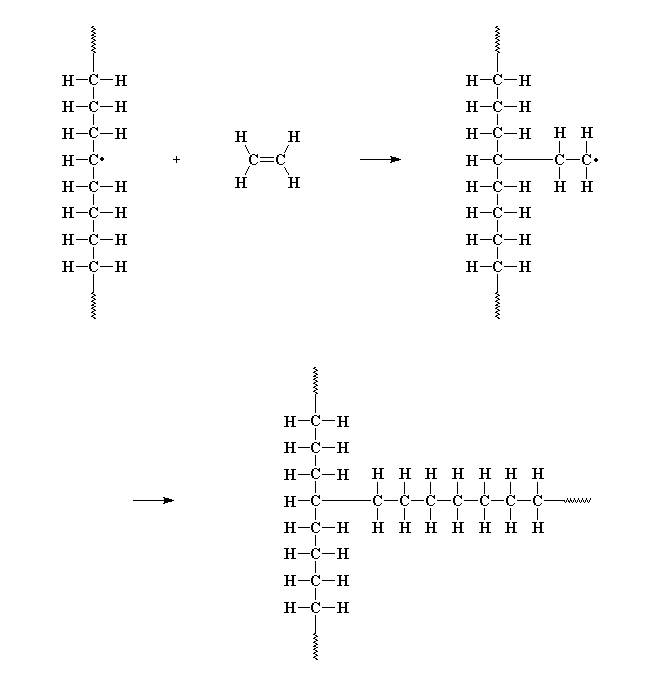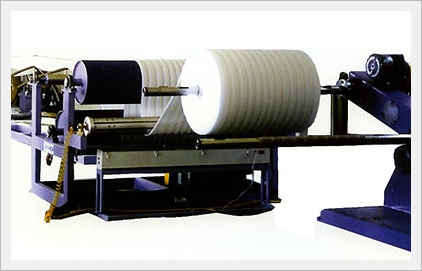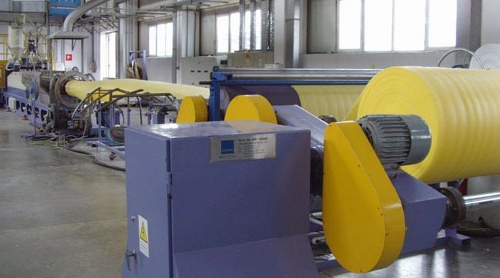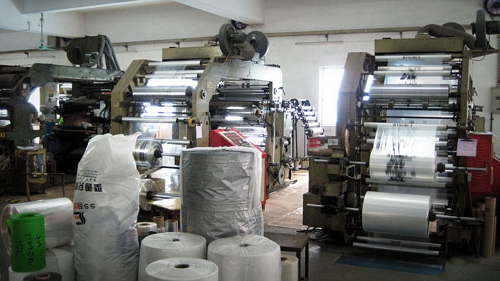Most often, the manufacturing business is associated with a large investment of initial capital. In addition, for a person unfamiliar with the process, the development of a new business can be quite difficult. Polyethylene production can be safely attributed to pleasant exceptions to the general rules. For a successful start, there is no need to spend a lot of money at once, because the business quickly pays off and begins to generate stable profits. But before setting up the production of polyethylene, we will study its features, varieties, applications and try to draw up a small business plan.
What is polyethylene?
This is the name of a synthetic polymer material based on ethylene - an organic colorless gas with a mild odor. It is the most productive material in the world. From it are synthesized such well-known products as ethyl alcohol, styrene, ethylbenzene, acetic acid, vinyl chloride and many others.
Polyethylene is produced in the form of transparent or colored granules of various shapes. Their size is usually from three to five millimeters. The production of polyethylene granules consists in the polymerization of ethylene gas under high, low pressure, as well as with the use of additional conditions. The main enterprises manufacturing polymer materials are located in Russia, Uzbekistan, Belarus, and South Korea.

Due to the special properties, the following grades of polyethylene are distinguished:
- HDPE - high density;
- LDPE - low density;
- LLDPE - linear;
- mLLDPE, MPE - linear metallocene;
- MDPE - medium density;
- HMWPE, VHMWPE - high molecular weight;
- UHMWPE - ultra high molecular weight;
- EPE - foaming;
- PEC - chlorinated.
There are also many materials related to the category of copolymers. Let us analyze several species that are most often found in industrial processing.
Low density polyethylene
The material has a plastic and soft structure. The production of high pressure polyethylene (LDPE) involves the polymerization of ethylene in a tubular reactor or autoclave. The process takes place at a temperature of about 750 aboutWith a pressure of 1.5–3 kgf / cm2. The result is a low density granulate. The resulting raw materials are sent to the production of packaging made of polyethylene in contact with dry and bulk solids. Bags made of such material can withstand up to four kilograms of weight.
High density polymer
The production of low pressure polyethylene (HDPE) is the polymerization process using catalyst systems. The result is hard granules with a high level of density - 0.960 g / cm3. They are suitable for the release of cling film. Commodity granulate is produced colored and colorless. Sometimes the finished product has the form of a powder.
What does foaming polyethylene look like?
So called a synthetic material having a closed-porous structure. The production of foamed polyethylene is based on a strong heating of the raw materials and subsequent whipping with the help of gas (butane, freon and others). In practice, polyethylene foam is widely used as an excellent heat insulator for universal use.

What is crosslinked polyethylene?
The production of particularly durable granulate is based on the use of ultra-high pressure. As a result of the process, strong adhesion of the molecules of the starting material occurs. The modified polymer is distinguished by high technical characteristics:
- Resistance to high temperatures. Material softens only at temperatures above 150 aboutC, melts at 200aboutC, and lights up only when reaching 400 aboutWITH.
- The increased degree of rigidity and tensile strength.
- Preservation of the main features during a sharp change in environmental conditions, as well as when exposed to chemical or biological destroyers.
- High vapor and waterproofing properties.
Cross-linked polyethylene is actively used in the production of pressure pipes for cold and hot water supply. In addition, it is used in the manufacture of elements of heating systems and special building materials.
Where does the device business begin
A polyethylene production plant may include several production lines for the production of various products: polymer films, bags, lids, containers, pipes, bottle caps and much more. You should not organize several directions at once. It is more advisable to enter the polymer market as a manufacturer of plastic film and bags. Having established stable work, you can gradually expand the range of products.
Practical experience shows that the production of polyethylene in Russia is guaranteed to provide a level of profitability of at least 15%. Before starting the enterprise, you need to take care of the registration of permits. You will have to visit the city administration, energy supervision, sanitary and epidemiological station, fire department, environmental service. If you deal with these issues tightly, you can completely meet the deadline of a month or a half. Overhead costs will amount to only 15-20 thousand rubles.
The issue of processing residues
Before you start organizing the production of polyethylene products, think carefully about the issue of waste management. Under no circumstances should they be buried or burnt plastic scraps. Firstly, it brings enormous damage to the environment. And secondly, such actions face serious punishment.

It’s easiest and cheapest to take polymer residues to a plastic processing plant. But it is worth bearing in mind that such a plant may not be in your village. If the production of recycled polyethylene is planned, it is best to arrange the release of garbage bags. To do this, you will have to make additional costs for the purchase of the production line. But in the end, the costs will pay off by the quick sale of popular goods that are in steady demand among the population.
Purchase of basic equipment
The choice of production lines today is quite large. As an example, consider a list of machines and assemblies that will be required to produce a film with the further formation of household packages from it.
Necessary equipment for the production of polyethylene:
- Extruder (extrusion unit) - a machine for converting raw granules into a film by blowing from the bottom up. The sleeve width should correspond to the size of the produced bags (300-550 mm). The unit also includes a device for folding seams.
- Bag making machine - a machine for cutting a film or sleeve into blanks of a certain length. The device also seals the workpiece on one side, forming the finished product.
- Punching press with a set of molds for the production of T-shirts or bags with a slotted handle.
- Machine for the manufacture of plastic clamps for packaging.
- Flexograph - a machine for applying printed images to a bag sleeve.
If the starting capital is not very much, then at first you can completely do without a printing device. It would be wiser to apply for a drawing service at specialized printing centers.
For waste recycling production will need to purchase a special apparatus for crushing. The approximate cost of the production line with the delivery and setup of machines is 1.5–2 million rubles.
Additional items of equipment
The production of polyethylene also requires the purchase of storage equipment (racks, tables, stands, boxes, etc.) for the storage of raw materials and finished products. Do not forget about equipping offices. Additional equipment can increase the total cost by 50-60 thousand rubles.
Production workshops need to equip a high-quality powerful ventilation installation and fire protection system. Particular requirements apply to storage facilities: the primary raw material for the production of polyethylene (granulate) has the ability to absorb fumes and gases. Failure to observe the storage rules for raw material may lead to a deterioration in the quality of manufactured products.
Necessary raw materials
The main synthetic material for the production of polyethylene products is polymer granules. They are 3-5 mm in size and are available in the form of a ball, cube, cylinder or small crumbs. The second source of raw materials is the recycling of waste or process residues.

Film production
The production technology of polyethylene includes several stages that need to be passed in order to get bright and convenient bags from the raw material.
- The polymer granules are loaded into the hopper compartment of the extruder. From here they are climbed with the help of a feeding screw. The tank maintains a constant temperature in the range from 180 to 240 degrees. In the process of moving the granules, very hot, are melted into a homogeneous mass. The resulting mixture is pressed through the forming hole, resulting in a plastic film in the form of a sleeve (or pipe). Automatic adjustment of the extruder allows you to produce a finished web of a given thickness and width.
- The resulting sleeve is gradually cooled and rolled.
- An automatic knife cuts the canvas into two strips of the same width.
- The finished sleeve enters the rewinder, which rolls the film into rolls. The scraps are packed separately, in the future they are allowed for recycling.
Drawing
If necessary, a color image is printed by flexography.
- Special paint is diluted with alcohol and constantly mixed. This is necessary so that the solution does not lose the desired viscosity.
- The dispenser directs certain portions of the dye to the rollers, which make an impression on the film. After drawing the picture, the polyethylene is again wound into a roll.
Packet formation
The next stage allows you to create a basis for the paws.
- The roll with the printed image is placed in a bag making machine. Using special devices, a “pattern” of the future bag is cut out of the film and a bottom fold is formed.
- Passing through the stamping press of polyethylene blanks, make holes for pens. The guillotine cuts off the top of the bag to further secure the plastic handles, or cuts out the shirt.
- A welding knife connects the edges of the bag at a temperature of 180 degrees, resulting in a whole product.
The final process is checking the quality of the seams and fasteners fasteners.
Conclusion
As we were able to see, the production of polyethylene is a rather complicated chemical process, which is only possible for large industrial enterprises of a specialized direction. And the technology for processing finished granules seems to be a fairly simple matter that does not require in-depth knowledge. Starting your business with the installation of a production line, you can completely return the money spent in 2-3 years.








